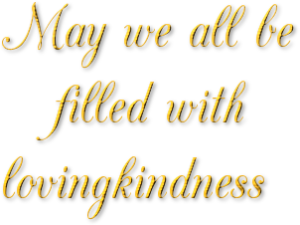Do you make regular visits to yourself?
–Rumi
 Recently, while reading the book True Refuge, by Tara Brach, PhD, I was struck by her concept of the sacred pause. I appreciated her description of the steps involved in pausing and arriving in presence and started playing around with the concepts in my mind. I began to conceptualize it a little differently because my original introduction to mindfulness, close to 20 years ago, was through the lens of Dialectical Behavior Therapy(DBT), which I started learning when I participated in my first week-long training with Marsha Linehan on how to teach clients mindfulness, distress tolerance, emotional regulation, and interpersonal effectiveness skills. Beginning to integrate these two approaches to mindfulness, as well as concepts learned from workshops and courses with Sharon Salzberg, Tara Brach, Ron Siegel and others, produced these seven steps to mindful awareness.
Recently, while reading the book True Refuge, by Tara Brach, PhD, I was struck by her concept of the sacred pause. I appreciated her description of the steps involved in pausing and arriving in presence and started playing around with the concepts in my mind. I began to conceptualize it a little differently because my original introduction to mindfulness, close to 20 years ago, was through the lens of Dialectical Behavior Therapy(DBT), which I started learning when I participated in my first week-long training with Marsha Linehan on how to teach clients mindfulness, distress tolerance, emotional regulation, and interpersonal effectiveness skills. Beginning to integrate these two approaches to mindfulness, as well as concepts learned from workshops and courses with Sharon Salzberg, Tara Brach, Ron Siegel and others, produced these seven steps to mindful awareness.
Step 1: Setting the intention
The first step in this process is to decide that it is important to pause and check in with yourself and then set your intention to do it. Setting aside a time and making a commitment to make it a priority helps make it more likely you will actually follow through with it. Meditation teacher Sharon Salzberg put it elegantly: “let the power of intention lead the way.”
Step 2: Pausing
Taking time out from our daily lives so we can reflect on our internal experience and get to know ourselves better starts with pausing. I believe it is a sacred act because we are pausing in order to come home to ourselves instead of staying in “automatic pilot” mode all the time.
One way to initiate the pause is to take three mindful breaths. It is helpful to lengthen the out breath so that it is longer than the in breath, because this helps us to ‘step on the brakes’ by engaging the parasympathetic branch of the autonomic nervous system, which slows down our breathing and heart rate and calms our bodies.
Step 3: Arriving
Arriving involves sitting in an alert posture–attempting to find a balanced position that is upright, not slouched, yet relaxed, not stiff or tense–and then focusing attention on an anchor. The anchor can be internal or external, depending on what keeps you in that state of balanced alertness–focused, but not too intensely, and relaxed, but not sleepy and zoned out.
Options for internal anchors include continuing to focus on the breath or doing a body scan (see What is an interoceptive body scan meditation?). External anchors involve shifting the focus to become mindful of one or more external sights, sounds, scents or sensations (i.e. the tactile feel of anything you can touch). An easy way to remember these external focal points is to think of the four ‘S’ senses, since all 4 words start with the letter ‘s’.
In a meditation course I took with Tara Brach through NICABM (National Institute for the Clinical Application of Behavioral Medicine), the following was one of the ways she guided us to arrive in presence:
“Take some moments to arrive. You might just make sure your senses are awake so that as
you come into stillness, you find your posture that can support being alert and being relaxed.
As you close your eyes, take a moment to connect with what’s right here for you.
Let’s just notice if you can hear the sounds that are around you – just listen with receptivity.
Feel the life in your body. You might feel the sensations in your hands. You might loosen the belly a little and breathe in deeply. Let the out breath be gentle – feel the letting go. Once again, inhale deeply and then with a slow out breath – just let go.
Feel the breath and feel your body.”
Step 4: Being Present
Once you have “arrived” you are in a state of alert stillness. The idea is to be fully here now.
Step 5: Noticing
The next step is to mindfully observe your present experience, including noticing what is happening in your body, both internal sensations and impulses to move a part of the body (like when you feel the urge to scratch an itch) and noticing any emotions and thoughts you are experiencing in the moment. The following way of mindfully noticing is my adaptation of part of the Three Minute Breathing Space from the Mindfulness Based Cognitive Therapy (MBCT) curriculum that I learned during a NICABM course I am currently taking with Ron Siegel, PsyD on Mindfulness and Psychotherapy.
Now you can take the first step of becoming aware of what is going on with you right now.
Start to become conscious of what is going through your mind: what thoughts are around?
Here, as best you can, just notice thoughts as mental events, observing them without becoming attached to them.
Then note the feelings that are around at the moment. In particular, turn toward any
sense of discomfort or unpleasant feelings. So, rather than try to push them away or shut
them out, just notice them, perhaps thinking to yourself, “Ah, that’s how it is right now.”
And with sensations in the body, ask yourself, “Are there sensations of tensions, of holding,
of letting go? Are there any other sensations in the body? Are there any urges to move any
part of the body?” Become aware of them, simply noticing whatever is arising in this moment.
Step 6: Accepting
Marsha Linehan talks about radical acceptance. This means you are accepting even that which feels unacceptable about your present experience without judgment. However, recognizing that we are only human, we may not always be able to suspend judgment. Then it is important to radically accept our difficulty being able to accept what we are experiencing.
Human beings are not able to achieve perfection, even though we strive for it. Therefore, it is logical to accept our imperfect attempts at pausing and being mindfully present. Research has demonstrated that we are distracted from our immediate goals an average of 47% of the time. Therefore, it makes sense to accept mind wandering as inevitable. Also, the urge to avoid unpleasantness and discomfort is a natural impulse, so we deserve acceptance and understanding when we resist facing uncomfortable realities. So it becomes evident that this step is needed every step of the way, not just in chronological order.
Step 7: Returning
The final step is one which is also necessary every step of the way, not just after completing the other six steps. There are two important ways that we practice returning. We gently return our attention to mindful awareness of present experience when we notice that the mind has wandered, over and over again. We also return our attention to our chosen anchor whenever we start to become too uncomfortable or overwhelmed by our present experience. Then we return to focusing on our broader experience again when we are ready.
What do you think of the concept of the sacred pause? How do you pause and become mindful of your internal experience? If you tried the above method, please share your experience below.
If you enjoyed this post, please share it with others. You may also enjoy reading, Seeking the Middle Way and Balancing Mindfulness of Emotions with Lovingkindness.
 Today is the first day of the 28-Day Meditation Challenge based on practices found in Sharon Salzberg’s books: Real Happiness, and Real Happiness at Work. I participated in this challenge last year and have made a commitment to participate again this year. I hope you will join me by making your own commitment to 28 days of meditation practice.
Today is the first day of the 28-Day Meditation Challenge based on practices found in Sharon Salzberg’s books: Real Happiness, and Real Happiness at Work. I participated in this challenge last year and have made a commitment to participate again this year. I hope you will join me by making your own commitment to 28 days of meditation practice.

 Recently, while reading the book True Refuge, by Tara Brach, PhD, I was struck by her concept of the sacred pause. I appreciated her description of the steps involved in pausing and arriving in presence and started playing around with the concepts in my mind. I began to conceptualize it a little differently because my original introduction to mindfulness, close to 20 years ago, was through the lens of Dialectical Behavior Therapy(DBT), which I started learning when I participated in my first week-long training with Marsha Linehan on how to teach clients mindfulness, distress tolerance, emotional regulation, and interpersonal effectiveness skills. Beginning to integrate these two approaches to mindfulness, as well as concepts learned from workshops and courses with Sharon Salzberg, Tara Brach, Ron Siegel and others, produced these seven steps to mindful awareness.
Recently, while reading the book True Refuge, by Tara Brach, PhD, I was struck by her concept of the sacred pause. I appreciated her description of the steps involved in pausing and arriving in presence and started playing around with the concepts in my mind. I began to conceptualize it a little differently because my original introduction to mindfulness, close to 20 years ago, was through the lens of Dialectical Behavior Therapy(DBT), which I started learning when I participated in my first week-long training with Marsha Linehan on how to teach clients mindfulness, distress tolerance, emotional regulation, and interpersonal effectiveness skills. Beginning to integrate these two approaches to mindfulness, as well as concepts learned from workshops and courses with Sharon Salzberg, Tara Brach, Ron Siegel and others, produced these seven steps to mindful awareness.
 The prefrontal cortex is the part of the brain that persuades you to get up to meditate and exercise when you feel like staying in bed, helps you to resist the extra helping of dessert, and motivates you to start working on the project that you feel like putting off until tomorrow. According to Robert Sapolsky, a neurobiologist at Stanford University, the main purpose of the prefrontal cortex is to bias the brain towards choosing to do “the harder thing.”
The prefrontal cortex is the part of the brain that persuades you to get up to meditate and exercise when you feel like staying in bed, helps you to resist the extra helping of dessert, and motivates you to start working on the project that you feel like putting off until tomorrow. According to Robert Sapolsky, a neurobiologist at Stanford University, the main purpose of the prefrontal cortex is to bias the brain towards choosing to do “the harder thing.”